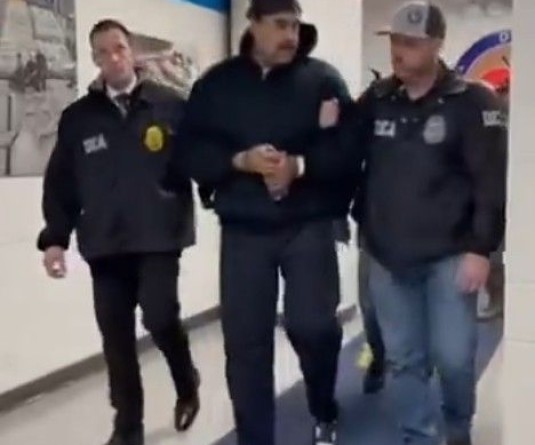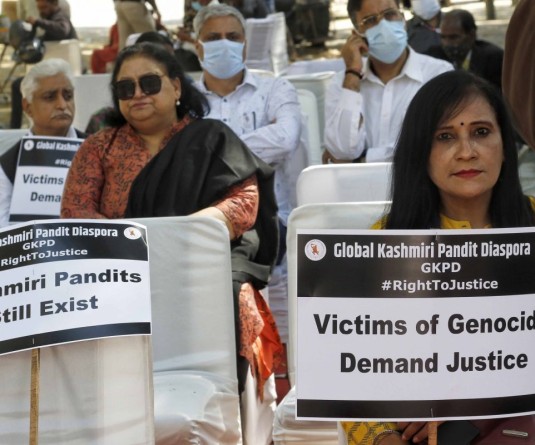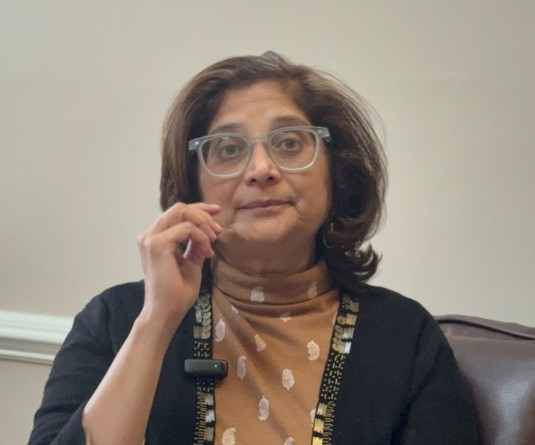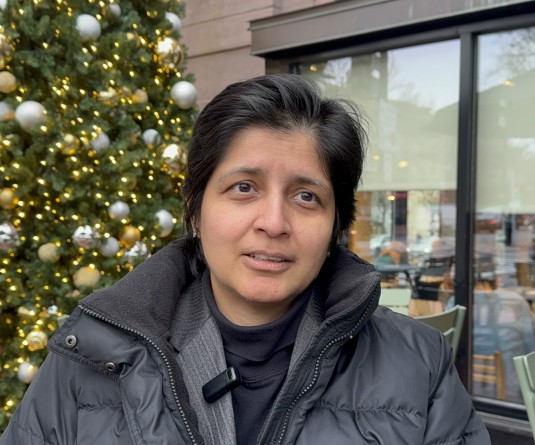5th graders at Louise Elementary School study in a classroom with plastic partitions, during the coronavirus disease (COVID-19) pandemic in Louise, Texas, U.S., November 20, 2020. Picture taken November 20, 2020. REUTERS/Go Nakamura
By Kristina Cooke, Benjamin Lesser and M.B. Pell
November 25 (Reuters) - After a two-week deluge of calls and messages from parents - and at least one death threat - the school board in Chandler, Arizona, called a special meeting this fall.
The board would revisit its decision, prompted by the coronavirus, to temporarily close local campuses and offer all classes online.
Parents, teachers and others poured out their thoughts in 1,100 public comments posted online before the September meeting. “If our schools do not open in person I will yank both my boys OUT and take them to another school district!!!” one parent wrote.
Many teachers assailed the district, which serves about 44,000 students near Phoenix, for wavering. “You look weak to the public; you look unconcerned for safety to your employees,” wrote one instructor. Ultimately, the board backtracked, voting 3-2 to start reopening school buildings. Eight-six percent of students returned to campus.
Across the United States, district leaders face pressure from all sides as they grapple with how to educate children during the pandemic, a Reuters survey of 217 districts showed. Many parents are balking at online instruction, seeing it as inferior to classroom learning and disruptive to life at home and work. Other parents worry about sending kids back into classrooms prematurely amid a raging pandemic.
At the same time, many teachers, some backed by powerful unions, say they are not comfortable teaching in person, fearing kids may infect them with a virus generally more dangerous for adults. Union leaders complain of inconsistent COVID-19 testing and safety standards.
Districts are caught in the middle, struggling to accommodate both families and faculty as they juggle the separate challenges of in-class and virtual instruction. Meanwhile, a new wave of infections has arrived, sending caseloads in parts of the United States soaring out of control.
“Every school district across the nation is in the position in which no matter what decision they make and how well thought out it is, it will leave some in the community thinking it’s the wrong decision,” said Larry Rother, senior executive director of pre-kindergarten through 12th grade educational services at Chandler.
Adding to the stress on everyone involved is unpredictability. Plans can change suddenly depending on the vicissitudes of the virus and officials’ tolerance for risk. New York City, with the largest school system in the country, epitomizes the problem. Six weeks after opening schools to optional in-person attendance, the mayor reversed course last week, closing campuses through at least Nov. 30. Parents and caregivers for more than 300,000 students had no choice but to adapt on the fly.
Reuters surveyed 217 districts in 30 states, which serve about 2.4 million students, to determine how jurisdictions large and small are coping with the question of reopening campuses. The broad survey began in late September, and Reuters conducted more detailed reporting through mid-November, focusing on 12 districts serving a combined 1 million students. The New York City school system did not respond to the survey.
Among the findings:
* The vast majority of the districts settled on offering a mix of in-person and remote learning this fall. Five percent said they were remote only and 5% in-person only. Some, like Chandler, changed plans after opening. The Jefferson County School District near Denver, for instance, is temporarily switching most students to all-remote learning this month amid the surge of cases in Colorado.
Most districts that provide in-person instruction require preventive measures such as masks and social distancing. Some have tried a little creativity: In Premont, Texas, a rural community about 70 miles southwest of Corpus Christi, administrators gave the youngest elementary school students Hula Hoops to help them keep their distance from others in hallways.
* Given the option, the districts said most parents want their kids to go back to campus at least part-time. About 70% of parents and guardians chose a learning model that includes some classroom instruction. Several district leaders told Reuters that virtual instruction has led to “learning loss”, or a regression in skills, among some students. But districts said they have to balance that concern against teachers’ desire for safety.
* Adapting to the pandemic has been costly. As of late September, the districts collectively had spent more than $340 million on COVID-related expenses including new laptops and internet hotspots for remote learners, as well as improved building ventilation and extra cleaning supplies for classrooms.
Some districts have been able to cover costs through the federal CARES Act, the initial relief package for COVID-19 passed in March, or supplemental state funding. But many have been forced to raid their regular budgets and reserves, creating the potential for cutbacks later affecting anything from textbook purchases to payroll.
* About half the districts reported problems keeping their schools properly staffed, in part because teachers and other workers on campus must go into quarantine if potentially exposed to COVID-19. In Storm Lake Community School District in rural Iowa, Superintendent Stacey Cole recalled brainstorming in October with an elementary school principal who worried she lacked enough staff to get through the week. As of November 16, the staff was down about 10%, with five positive cases among adults and 30 in quarantine.
In a normal year, staffers report to work even when they have a cold, Cole said. “Now we say, ‘Don’t come in, get a COVID test,’” she said. But it takes as long as eight days to get back test results there, she said - sidelining those staffers in the meantime.
* Only about two-thirds of the 217 districts said they collect data on positive tests among students and staff. Most of those reported few or no COVID-19 cases during the first weeks of the school year. Since then, several, including the Dallas Independent School District, have reported surges, though the numbers there still account for less than 1% of students and employees overall.
The number of reported cases in Arizona’s Chandler district has remained low since students returned to campuses. Fewer than 1% of staff, and half a percent of students, tested positive as of mid-November.
In most instances, it is unclear whether cases originate in schools or somewhere else.
Most children infected with the coronavirus have mild or no symptoms, but kids can spread the virus to others, including adults and other family members, according to the U.S. Centers for Disease Control and Prevention.
After members of her soccer team tested positive for coronavirus, 14-year-old Maddie Weiser of the Jefferson County district said she worried she might have passed on the virus unknowingly to others at school, or to her grandmother. “It's so hard for me to think about it. If this is this stressful for me, it must be 800 times worse for my teachers,” Weiser said.
A study from the Kaiser Family Foundation found that one in four teachers and school staff has conditions putting them at heightened risk for serious illness from COVID-19, though the researchers said that is about the same percentage as in other workplaces.
"Where's the data that prove that we are not risking our health and safety or even our lives by coming to work every day?" Mamie Huff, who has taught in Dallas elementary schools for 24 years, asked her district’s school board on Oct 22. "This is heartbreaking. Because I love my students. I love my school. I love my job. But what I don't love is that I have no true control over my own health and safety."
‘GREAT INTENTIONS’
Michael Hester, superintendent of the Batesville School District in rural Arkansas, captured the feelings of many school administrators during the fall term: “We count it as a blessing to even make it to Friday,” he said.
Hester said one of his greatest frustrations is the shifting rules coming down from the state. For instance, when the school year started in late August, the original plan was for the Arkansas Department of Health to conduct “contact tracing” on any positive coronavirus cases among students and staff on campuses. That means finding and notifying everyone who may have been exposed to the virus by an infected person. But within weeks of reopening, Hester said, that responsibility was largely shifted to the individual districts.
Dr. Joel Tumlison, who focuses on infectious disease outbreaks for the health department, acknowledged that officials had “some problems initially” doing timely contact tracing when schools reopened, requiring districts to assist with the work.
“It’s a big task, we recognize that,” Tumlison said.
Contact tracing is just one example of the challenges districts now confront that fall well outside the realm of traditional schooling. Others are enforcing mask and social distancing requirements and planning around the individual quarantine schedules of infected students and staff.
In the Batesville district, which had about 3,400 students and a cumulative total of 95 cases among adults and kids as of mid-November, some families have had to keep students home for multiple 14-day quarantine periods, Hester said.
Then, in the case of virtual instruction, there is the dreaded problem of “learning loss.” When students in Dallas, Texas, returned to school in September, the district found through testing that there had been a significant deterioration in students’ math skills in the second half of the last school year when all kids were attending online.
“This concerns us significantly,” said Superintendent Michael Hinojosa, who also acknowledged some teachers were “scared to death” to return to campuses. “Math is sequential, you have to have (grasped) the prerequisites before you can learn the next skill.”
Maren Butcher, the mother of a high school sophomore and a third grader at Chandler in Arizona, said remote learning was a disaster for her children. “I watched the spark for school slowly die in my older son. We felt like we were picking him up with a spatula every day.”
After he went back in person, his motivation improved, the classes were more rigorous and he’s “been able to advance more academically,” she said.
In Texas’ rural Louise Independent School District, about a third of the roughly 500 students started the year with remote instruction.
Within weeks Garth Oliver, the district’s superintendent, started to see that students working remotely were struggling to keep up with their peers.
“You call the parents and they say, ‘They have been on the computer all day’ - but they are playing games,” Oliver said.
So on Sept. 22, Oliver sent a letter to district families announcing that the remote instruction would end the following week. “Everybody had great intentions but there is no substitute for face-to-face instruction with a professional educator,” Oliver said.
Only two families left the district afterward, he said.
A JUGGLING ACT
For the nation’s districts and teachers, there is no common playbook.
Districts, for instance, have different thresholds for when to close campuses, based on COVID-19 testing results. In New York City, schools were closed because the city’s positivity rate hit a 3% seven-day average, a standard set by the mayor. Elsewhere, the thresholds are much higher. And some districts don’t have thresholds at all.
Randi Weingarten, president of the American Federation of Teachers, a national union, said both educators and parents would be more open to having students return to campuses if the federal government provided a well-funded reopening strategy with clear measures of how it’s working.
“That’s the issue, instead of pitting teachers against parents,” said Weingarten, who top Democrats see as a candidate for secretary of education in President-elect Joe Biden’s incoming administration.
Meanwhile, teachers struggle to adapt to ever-evolving directives that vary by district.
In some places, instructors must handle both face-to-face and online instruction. Some teach the two groups concurrently - juggling, for instance, technology glitches with classroom misconduct. Other districts split up their staff, assigning them to virtual or in-class instruction.
"We've been pulling off the impossible, teaching virtual and in-person classes at the exact same time," Jennifer Lees, a teacher in Dallas, told her school district board on Oct. 22. "We're exhausted, scared and stressed."
Staffing shortages and budgetary constraints make matters worse.
After work dried up last spring, many substitute teachers opted to find other employment, said Katie Nash, president of the Chandler Education Association, the Phoenix-area teachers' union.
To cover COVID-related expenses, many districts received at least some federal CARES Act money, but the White House and congressional leaders have been unable to agree on a new relief package. And most states face budget deficits, limiting their ability to help.
Some districts also confront potentially costly lawsuits from parents of children with special needs, whose individualized education plans often weren’t designed for remote learning.
Another financial challenge comes when dissatisfied parents leave the district. State aid is often based, at least in part, on student attendance, so departures can decrease funding.
“A lot of these districts are hoping the federal government will come through at some point and make them whole,” said Dan Domenech, executive director of the AASA The School Superintendents Association. “If that doesn’t happen, a lot of school districts are going to be short.”
THE LOUDEST VOICES
Not all parents or teachers are of one mind about school reopening. But some voices are louder than others.
Even before the summer break began, the Chandler Education Association, the teachers' union near Phoenix, made its opposition to in-person instruction known to the district.
Nash, the union’s president, armed herself with survey data to show the district that more than half of teachers who responded felt unsafe returning to campuses.
She told Reuters that a small but highly vocal group of parents drowned out instructors’ concerns.
But Chandler parent Butcher, the daughter of a teacher, said she opposed what she saw as the union’s steady pressure on the district to stay remote.
“The loudest voice,” she said, “was not the parents.”
In Grantham, New Hampshire, about 30 parents attended a school board meeting in October to call for a full school campus reopening. The group clapped loudly when people made points in favor of reopening and was “somewhat disrespectful” in its behavior, said Superintendent Sydney Leggett.
She said parents who wanted to stick with strictly virtual or hybrid instruction were not as well-represented at the meeting, held in the school gym, because they were worried about contracting the coronavirus.
After seeing parents argue on social media, she sent a letter to families asking them to be kind to one another. The district decided to open for four days a week, in person, starting in November. It also will continue to offer a remote option.
“I’m hoping when we come out of this we still have a good community feeling,” Leggett said. “It's going to be work to make sure that this divisiveness doesn't stick around.”






